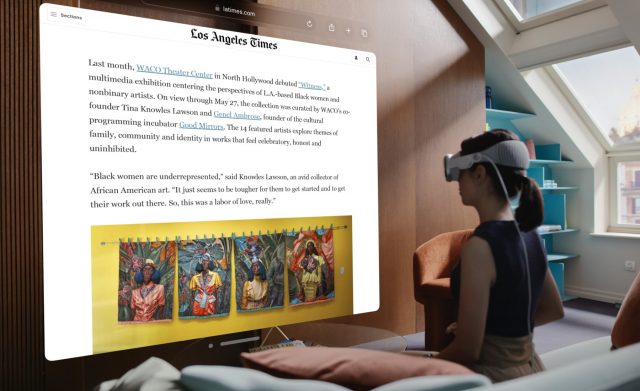Apple Vision Pro Has Become a Big Competition for Meta
Apple Vision Pro Has Become a Big Competition for Meta

Meta has unquestionably been the solitary giant competitor in a field of minor challengers in the XR arena for a considerable time. With Apple finally venturing into the virtual reality industry, Meta will no longer be able to set its own pace.
Apple’s latest headset may be incredibly expensive at $3,500, placing it in a completely different price range than Meta’s upcoming Quest 3 priced at $500, much less the Quest 2 at $300. However, there will still be pressure to compare the experience Apple has created with what Meta provides.
Ultimately, it’s indisputable that while the Vision Pro is loaded with hardware and benefits from Apple’s exclusive and powerful M2 chips, much of what the headset does well hinges on the software experience rather than the quality that’s unlocked with the hardware.

Impressive Hardware, Struggling Software
Meta’s headset lineup is more than sufficient in terms of technical capabilities. The Quest 2 remains a reliable device that boasts superior performance in several aspects and is still widely considered to be among the most impressive products in its category. In addition, the upcoming release of the Quest 3, which promises enhanced features such as increased power, improved lenses, and better pass through AR, will only further solidify Meta’s position as a leader in the market. Meta’s hardware has consistently impressed consumers over the years, dating back as far as the original Oculus Rift CV1.
VR Metaverse has faced significant challenges in making usability a top priority on the software side of things. Despite understanding the importance of reducing friction in VR and creating a standalone headset that doesn’t require external tracking beacons or a computer, there doesn’t appear to be a strong emphasis on streamlining the interface between the Quest’s system interface and Meta’s own first-party applications. This lack of attention has also prevented the company from providing a concise and useful set of guidelines for developers and users to take advantage of a unified user experience.

The VR Space
Up until now, Meta’s domination in the VR space has remained unrivaled. Despite the criticisms highlighted earlier, its headsets have always been known for offering the best value in their class, with superb hardware and a vast library of games – all offered at a highly competitive price unmatched by rivals.
Nevertheless, this monopoly also meant that Meta didn’t feel the pressure to respond to any innovation or competition posed by other headset makers. This, in turn, has limited the leverage of developers and users, as they had no viable options outside of Meta’s affordable standalone headset with the best content library.
What’s more, this created a vacuum in the consumer VR space, which may seem like a victory for Meta at first glance. However, it has prevented the company from focusing on how to make its headsets appeal to a broader audience.
 9D VR Simulator Virtual Reality Cinema For Sale Theme Park Manufacturer Supplier
9D VR Simulator Virtual Reality Cinema For Sale Theme Park Manufacturer Supplier